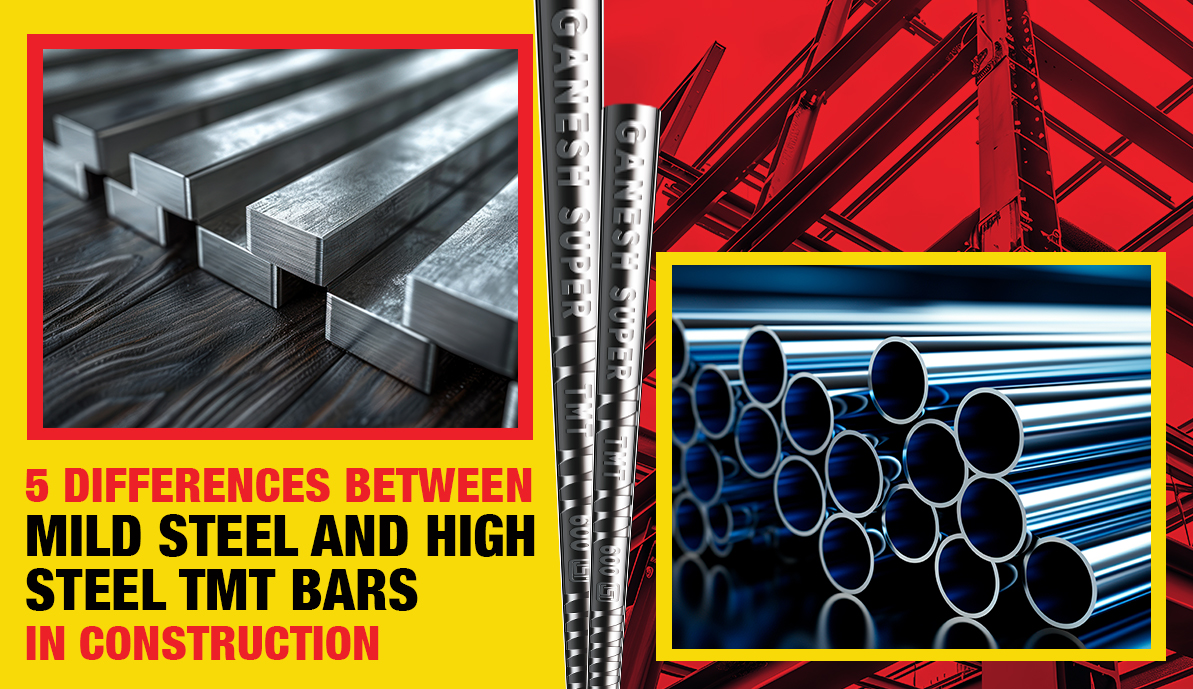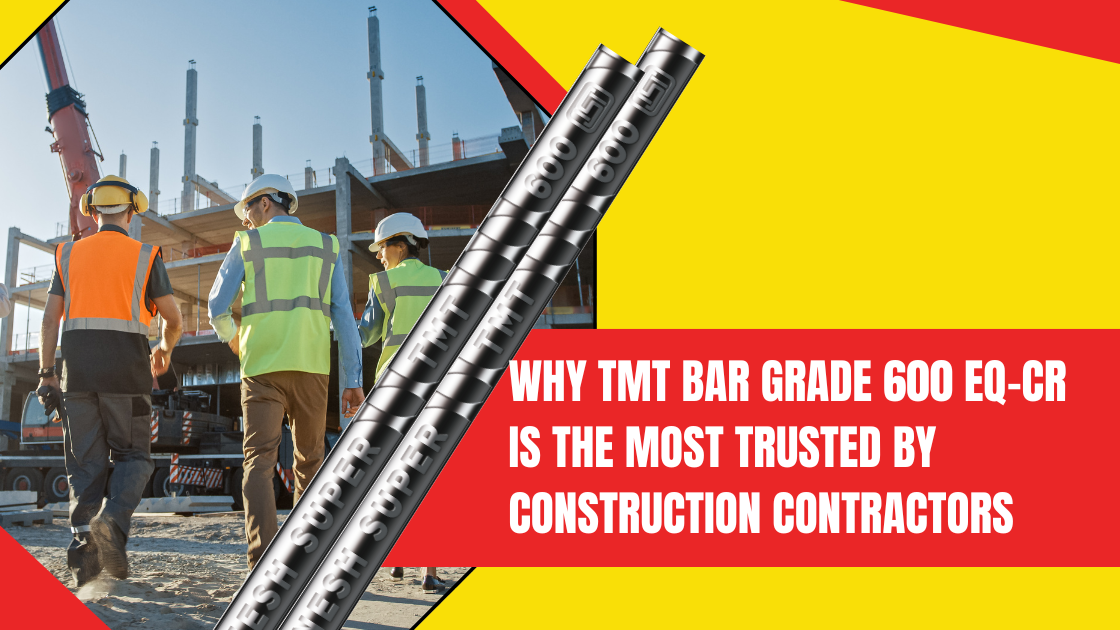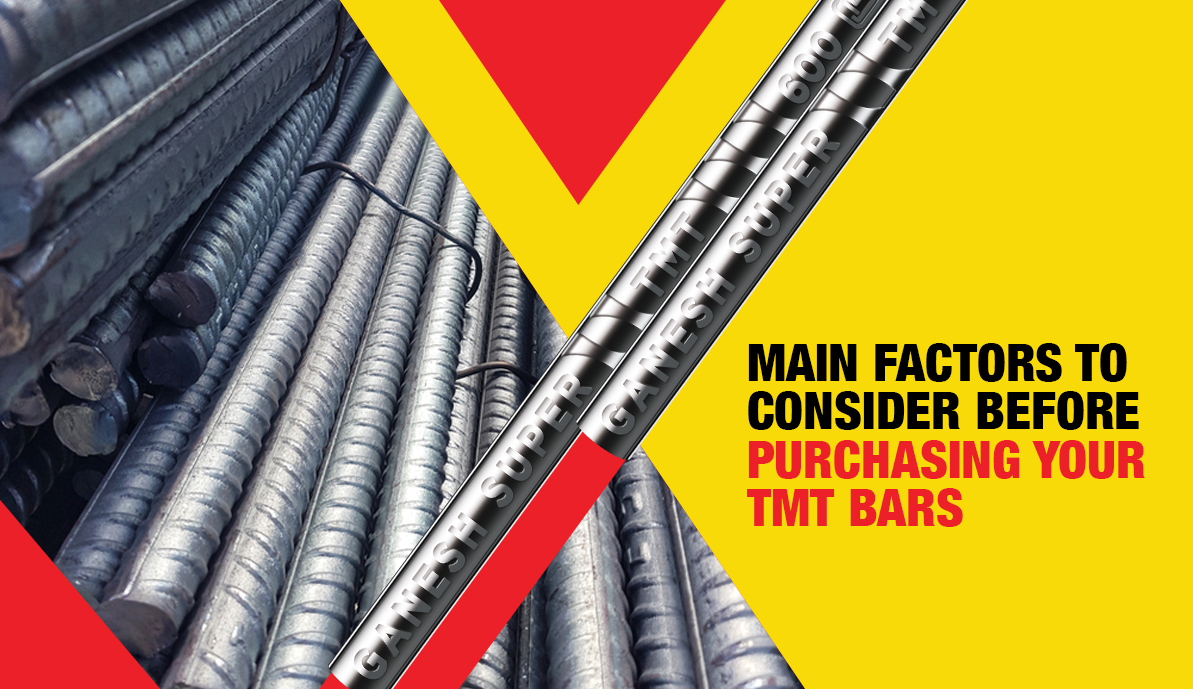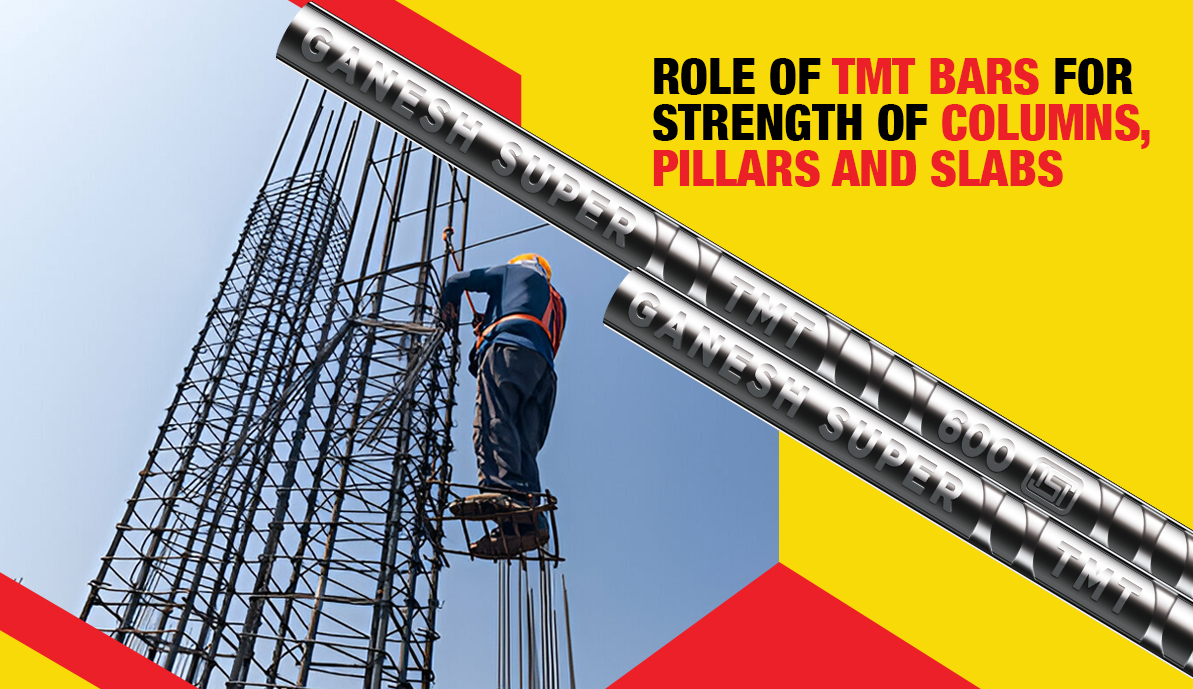India’s construction sector has been a significant contributor to today’s economy. Steel is by far the most essential construction material, irrespective of small residential or high-end commercial sites. Before indulging in a construction project, it is necessary to know about the types and grades of steel bars that are best for use.
Amidst different steel bars, Thermo-Mechanically Treated (TMT) bars have gained prominence in India’s construction industry. The high resilience, Ductility, and Versatility offered by TMT bars have improved the structural durability of buildings and bridges.
As TMT bar applications have increased, variations of Mild Steel and High steel TMT bars have been introduced. Regarding construction durability, both types of TMT Steel bars are needed.
Ganesh Super functions as the leading TMT Bar Supplier in Bihar. If you are a local construction contractor or architect, knowing about mild and high-steel TMT bars will help ensure structural quality.
In this blog, we’ll discuss six differences between the two types of TMT Steel bars in construction. Continue reading to know more.
What’s so Special about TMT Steel Bars?
Even though TMT Bars are widely used in modern Indian construction, many contractors are still unsure about their applications. If you are still unaware of TMT Bars’ abilities, here’s what you need to know.
We manufacture TMT Steel Bars using German CSR Technology to offer better damage resistance. Our TMT bars undergo a series of heating and cooling processes, which increases the sturdiness of the outer core and ductility of the inner bar cores.
The main specialties of TMT steel bars are their ductile nature and heat-resistant ability. Unlike regular steel bars, TMT can absorb seismic shocks, dissipate energy, and increase concrete bonding.
What are Mild Steel TMT and High Steel TMT Bars?
Mild Steel is highly weldable and is preferred for construction projects. As the best TMT Bar suppliers in Bihar, we employ both surface and thorough treatment. The testing included for mild steel TMT bars has focused on improving functional ability, irrespective of construction projects.
High-steel TMT bars contain low carbon content and distinctive alloying components. A consistent tempering process increases their tensile strength, which can support the structural intricacies of your construction project.
In some cases, Mild Steel TMT bars are designed and tempered to produce High Steel TMT bars. So that your construction projects can withstand high pressure and corrosion over time.
To know about how you can use Mild and High Steel TMT bars, continue reading the points below.
5 Main Differences between Mild Steel and High Steel TMT Bars
1. Product Composition
A significant difference between Mild Steel and High Steel TMT bars lies in their product composition. As the best TMT bar suppliers in Bihar, we include low amounts of carbon by weight. Even though they don’t undergo consistent tempering, their tensility remains uncompromised.
On the other hand, High Steel TMT Bars contain alloys like manganese, silicon and phosphorous. These factors render great tensile strength and high anti-corrosion properties to function as per structural requirements.
2. Market Applications
Our Mild Steel TMT bars are best for making steel frames in buildings. Their anti-corrosion properties make them highly useful for pipelines. Once corrosion is checked in your building, internal resilience will gradually increase over time.
Ductility is the main property of high-steel TMT bars, which makes them preferred for high-end constructions. You can apply High-Steel TMT bars to the arches, domes, beams, and facades, rendering full support for your architecture.
3. Operational Strength
Although their composition might slightly differ, both High- and Mild-Steel TMT bars hold adequate strength. We use a High–Quality 100KV Universal Testing Machine to ensure the strength of TMT bars in different manufacturing stages and applications.
Our mild steel TMT bars include grades like Fe 415 and Fe 500, while high steel TMT bars are graded as Fe 550. The operational strength of mild steel TMT bars can falter for high-end instructions, and that is when our high steel TMT Bars can help.
4. Flexibility
Material flexibility is the main characteristic of both Mild Steel and High Steel TMT bars. As the best TMT bar suppliers in Bihar, we ensure that our TMT steel bars are highly flexible in any circumstance.
We include four main steps in quality management: Control, Inspection, Total Quality Management and Assurance. As quality is assured in each step, product resilience is guaranteed. Whether it’s a pointed arch or a circular dome, our highly flexible TMT bars will be best for both.
5. Cost-Efficiency
Mild Steel TMT bars are less expensive than High Steel TMT bars. A significant reason for this difference lies in their production. Sometimes, tempering is avoided to keep the inner quality intact, resulting in Mild Steel TMT bars being less strong for high-end constructions.
However, in the case of High-Steel TMT bars, a consistent tempering process increases their ductility and resistance. Your construction’s ultimate goal is to resist depreciation and reduce corrosion.
If you use High Steel TMT bars, your need for structural resilience will be met, and your real-estate value will increase.
Key Takeaways
Ganesh Super excels in manufacturing highly tensile TMT bars that are suited for multiple construction purposes. India’s construction industry shows prospects of architectural growth in the upcoming years. As a construction contractor or architect, you can successfully meet this goal by choosing the best TMT bars. If your building is protected, your real-estate innovations will eventually improve.





